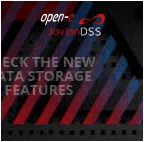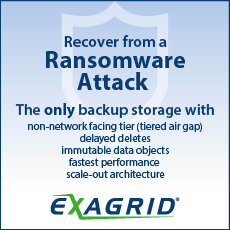Microsoft Technology Licensing Assigned Eleven Patents
Implementing server-based hierarchical mass storage, computer-readable media for fast snapshot of application data in storage, safe data access following storage failure, volatile account identification and isolation and resource management in distributed storage, modifying data resources within party-partitioned storage areas, harvesting spare storage in data center, secure data erasure verification in hyperscale computing, file service using shared file access-rest interface, shallow cache for content replication, key-value storage system including resource-efficient index, controlling storage access by clustered nodes
By Francis Pelletier | February 26, 2020 at 2:06 pmImplementing server-based hierarchical mass storage
Microsoft Technology Licensing, LLC, Redmond, WA, has been assigned a patent (10,552,385) developed by Cometto, Maurilio, Redwood City, CA, Pangal, Gururaj, Pleasanton, CA, and Degany, Ady, Sunnyvale, CA, for “system and methods for implementing a server-based hierarchical mass storage system.“
The abstract of the patent published by the U.S. Patent and Trademark Office states: ”Setting up and supporting the computer infrastructure for a remote satellite office is a difficult task for any information technology department. To simplify the task, an integrated server system with a hierarchical storage system is proposed. The hierarchical storage system includes the ability to store data at an off-site cloud storage service. The server system is remotely configurable and thus allows the server to be configured and populated with data from a remote location.”
The patent application was filed on May 20, 2013 (13/898,152).
Computer-readable media for fast snapshot of application data in storage
Microsoft Technology Licensing, LLC, Redmond, WA, has been assigned a patent (10,552,372) developed by Setty, Srinath Tumkur Venkatachala, Redmond, WA, for “systems, methods, and computer-readable media for a fast snapshot of application data in storage.“
The abstract of the patent published by the U.S. Patent and Trademark Office states: ”Techniques for a fast snapshot of application data in a storage system are disclosed. One computer-implemented method includes: receiving, over an electronic communications network, a first command to create a table, creating, in a storage system, the table including at least one row and a plurality of columns, the at least one row including a special metadata row, and fields of the plurality of columns including a key, a payload, a snapshot identifier number, a delete bit, a version identifier, and an entity tag, and initializing a key of the special metadata row and a payload of the special metadata row. The key of the special metadata row is initialized to a snapshot identifier, and the payload of the special metadata row is initialized to zero, and an entity tag of the special metadata row is initialized to a random value.”
The patent application was filed on June 28, 2017 (15/635,353).
Safe data access following storage failure
Microsoft Technology Licensing, LLC, Redmond, WA, has been assigned a patent (10,545,831) developed by Kruse, David, Kirkland, WA, Petter, Vladimir, Bellevue, WA, Koppolu, Lokesh Srinivas, Redmond, WA, Dion, David, Bothell, WA, and George, Mathew, Redmond, WA, for a “safe data access following storage failure.“
The abstract of the patent published by the U.S. Patent and Trademark Office states: ”A request identifier is employed with various systems and methods in order to enable an application to pause execution during a failure and subsequently resume execution and communication with a storage system once the failure is resolved. An application residing on a node may attempt to access target data on a storage system. The application sends a request to access the target data. The request may be associated with a request identifier that identifies the application. When the storage system experiences a failure, the application receives a failure notification. The application pauses execution as a result of the notification. When the node reestablishes a connection to the storage system, the application resumes execution using the same request identifier. If the resume request is granted, the application is guaranteed that the target data was not modified during the failure.”
The patent application was filed on January 25, 2017 (15/414,817).
Volatile account identification and isolation and resource management in distributed data storage
Microsoft Technology Licensing, LLC, Redmond, WA, has been assigned a patent (10,545,677) developed by Bolli, Sumadhur Reddy, Redmond, WA, Xie, Liang, Sichuan, China, Xi, Dengkui, Sammamish, WA, Skjolsvold, Arild Einar, Kenmore, WA, Ji, Xinhua, Redmond, WA, Mo, Dengyao, Bellevue, WA, and Swenson, Marcus Kimball, Duvall, WA, for “volatile account identification and isolation and resource management in distributed data storage systems.“
The abstract of the patent published by the U.S. Patent and Trademark Office states: ”A traffic manager for a distributed data storage system includes an iterative spike identifier to identify N levels of traffic spikes in traffic data on an account basis in a distributed data storage system, where N is greater than zero. A traffic cycle identifier selectively identifies cyclic traffic spikes in at least one of the N levels of traffic spikes for each of a plurality of accounts using autocorrelation and peak detection. A partition manager communicates with the traffic cycle identifier and selectively partitions one of the plurality of accounts based on based on the autocorrelation and the peak detection.”
The patent application was filed on June 18, 2018 (16/010,835).
Modifying data resources within party-partitioned storage areas
Microsoft Technology Licensing, LLC, Redmond, WA, has been assigned a patent (10,542,088) developed by Macksood, Azmil, Oslo, Norway, Fledsberg, Oystein, Trondheim, Norway, Kvalheim, Bard, Hoque, Rezaul, Bru, Olav Hamang, Solheim, Helge, Knudsen, Vidar, Bergstrand, Kjetil, and Hult, Simon, Oslo, Norway, for “modifying data resources within party-partitioned storage areas.“
The abstract of the patent published by the U.S. Patent and Trademark Office states: ”A server system comprising a physically separate storage area for each of a plurality of respective parties including a first and second party, and a manager function for managing the storage. E.g. some of the storage areas may be in separate server units or at separate geographic locations. Each of at least some of the storage areas stores a primary instance of one or more data resources of the respective party. The manager function is configured so as, in response to the second party forming a relationship with one of the resources of the first party, establish a secondary copy of said one of the resources of the first party in the respective storage area of the second party. Further, when the primary instance is updated with a change, the manager function automatically propagates the change in the primary instance to the secondary copy in the second party’s storage area.”
The patent application was filed on January 18, 2017 (15/409,447).
Harvesting spare storage in data center
Microsoft Technology Licensing, LLC, Redmond, WA, has been assigned a patent (10,542,085) developed by Bianchini, Ricardo, Presa, Inigo Goiri, Bellevue, WA, Fontoura, Marcus Felipe, Clyde Hill, WA, and Prekas, Georgios, Lausanne, Switzerland, for “harvesting spare storage in a data center.“
The abstract of the patent published by the U.S. Patent and Trademark Office states: ”A method and system for selecting servers for storage of replicas of a block of data is provided. The system selects a first server for storage of the data. The first server has a first processor utilization classification and a first reimaging rate classification. The system then selects a second server for storage of the data. The second server has a second processor utilization classification and a second reimaging rate classification. The system selects the second server so that the second processor utilization classification is different from the first processor utilization classification and the second reimaging rate classification is different from the first reimaging rate classification.”
The patent application was filed on June 22, 2016 (15/189,970).
Secure data erasure verification in hyperscale computing
Microsoft Technology Licensing, LLC, Redmond, WA, has been assigned a patent (10,536,538) developed by Munjal, Ashish, Redmond, WA, Caulfield, Laura, Woodinville, WA, Progl, Lee, Carnation, WA, and Khanna, Uuganjargal, Kirkland, WA, for a “secure data erasure verification in hyperscale computing systems.“
The abstract of the patent published by the U.S. Patent and Trademark Office states: ”Techniques of implementing out-of-band data erasure verification in computing systems are disclosed herein. In one embodiment, a method includes receiving a verification instruction from a system administrator. In response to and based on the received verification instruction, the method includes selecting a set of persistent storage devices to which data erasure verification is to be performed. The method also includes relaying the verification instruction to additional computing devices in additional enclosures, thereby causing data erasure verification on one or more additional persistent storage devices in the additional enclosures be performed generally in parallel to performing data erasure verification on the subset of persistent storage devices in one of the enclosures.”
The patent application was filed on September 16, 2016 (15/268,385).
File service using shared file access-rest interface
Microsoft Technology Licensing, LLC, Redmond, WA, has been assigned a patent (10,536,523) developed by Calder, Bradley Gene, Bellevue, WA, Ghanem, Jean, Redmond, WA, Edwards, Andrew James, Bellevue, WA, Aroya, Ishai Ben, Seattle, WA, Goebel, David Allen, Vashon, WA, Wu, Jiesheng, Haridas, Jaidev, Redmond, WA, Ganguly, Shuvabrata, Hendel, Matthew Douglas, and Demir, Ozan, Seattle, WA, for a “file service using a shared file access-rest interface.“
The abstract of the patent published by the U.S. Patent and Trademark Office states: ”In various embodiments, methods and systems for providing access to file systems are provided. An SFA-based operation having an operation modifier for a file in a file system is received. The SFA-based operation is defined based on a file-representational state transfer, (REST) interface. The SFA-REST interface comprises integrated functionality of an SFA protocol and REST protocol. The SFA-based operation is executed using the operation modifier. A REST-based operation for the file in the distributed file storage is received. The REST-based operation is defined based on the SFA-REST interface. The operation modifier is referenced in order to execute the REST-based operation. The REST-based operation based on the SFA-REST interface. A schema can be implemented for accessing the file system. The schema includes tables to store files, the table comprises fields corresponding to elements of a SFA-REST interface. A snapshot component can be implemented to backup file shares in the file system.”
The patent application was filed on May 10, 2015 (14/708,286).
Shallow cache for content replication
Microsoft Technology Licensing, LLC, Redmond, WA, has been assigned a patent (10,534,708) developed by Barker, Ross Neal, Redmond, WA, and Sufaru, Adrian, Seattle, WA, for a “shallow cache for content replication.“
The abstract of the patent published by the U.S. Patent and Trademark Office states: ”Embodiments relate to efficiently replicating data from a source storage space to a target storage space. The storage spaces share a common namespace of paths where content units are stored. A shallow cache is maintained for the target storage space. Each entry in the cache includes a hash of a content unit in the target storage space and associated hierarchy paths in the target storage space where the corresponding content unit is stored. When a set of content units in the source storage space is to be replicated at the target storage space, any content unit with a hash in the cache is replicated from one of the associated paths in the cache, thus avoiding having to replicate content from the source storage space.”
The patent application was filed on June 25, 2018 (16/017,985).
Key-value storage system including resource-efficient index
Microsoft Technology Licensing, LLC, Redmond, WA, has been assigned a patent (10,515,064) developed by Bennett, John G., Sammamish, WA, Fu, Chen, Cupertino, CA, and Khade, Ashwini S., San Jose, CA, for a “key-value storage system including a resource-efficient index.“
The abstract of the patent published by the U.S. Patent and Trademark Office states: ”A key-value storage system is described herein for interacting with key-value entries in a content store using a resource-efficient index. The index provides a data structure that includes a plurality of hash buckets. Each hash bucket includes a linked list of hash bucket units. The key-value storage system stores hash entries in each linked list of hash bucket units in a distributed manner between an in-memory index store and a secondary index store, based on time of their creation. The key-value storage system is further configured to store hash entries in a particular collection of linked hash bucket units in a chronological order to reflect time of their creation. The index further includes various tunable parameters that affect the performance of the key-value storage system.”
The patent application was filed on July 11, 2016 (15/207,355).
Controlling storage access by clustered nodes
Microsoft Technology Licensing, LLC, Redmond, WA, has been assigned a patent (10,503,419) developed by Kuznetsov, Vyacheslav, Sammamish, WA, Shankar, Vinod R., Woodinville, WA, D’Amato, Andrea, Kirkland, WA, and Dion, David Allen, Bothell, WA, for a “controlling storage access by clustered nodes.“
The abstract of the patent published by the U.S. Patent and Trademark Office states: ”Embodiments provide a method and system for enabling access to a storage device. Specifically, a node may request admittance to a cluster that has read and write access to a storage device. The node seeking access to the storage device must be first be approved by other nodes in the cluster. As part of the request, the node seeking access to the storage device sends a registration key to a storage device. Upon expiration of a registration timer, the node seeking access to the storage device receives a registration table from the storage device and determines whether its registration key is stored in the registration table. If the registration key is stored in the registration table the node has been accepted in the cluster and as a result, has been granted read and write access to the storage device.”
The patent application was filed on April 28, 2017 (15/581,392).














 Subscribe to our free daily newsletter
Subscribe to our free daily newsletter

